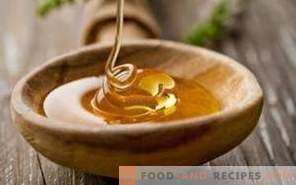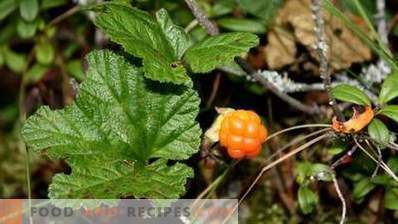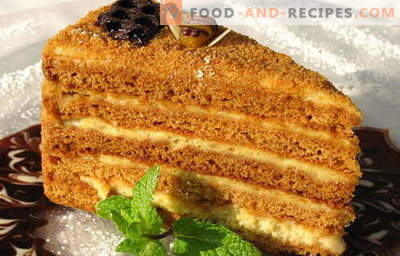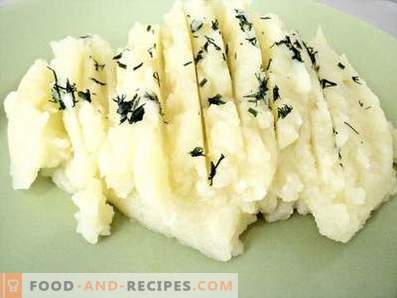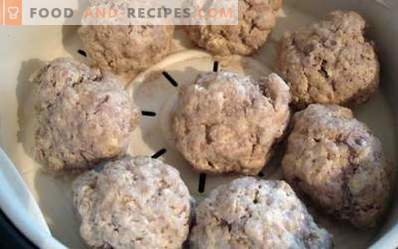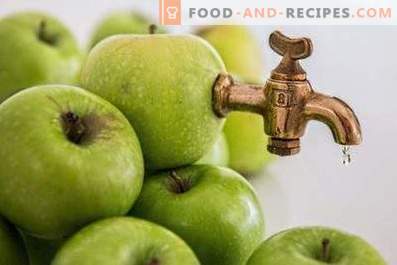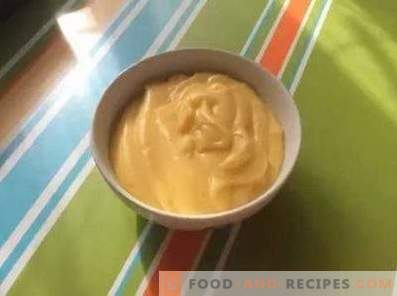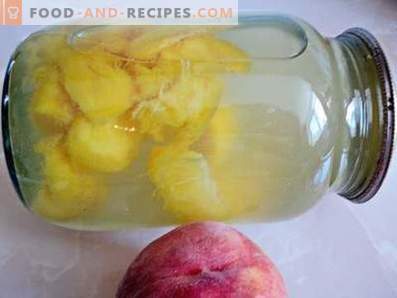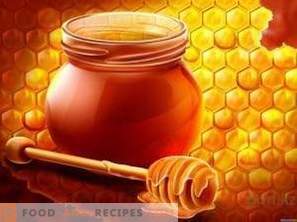
No caring hostess will leave her family for the winter without a few jars of fragrant, tasty and very healthy honey. They are treated colds and many chronic diseases, strengthen the immune system, used in the preparation of various dishes. Therefore, honey in the house is one of the most important winter preparations, but only on condition that you bought a really high-quality product, and not a fake, from which harm can be much more than good.
Despite the fact that beekeeping is one of the quite successful and profitable branches of agriculture, it is extremely difficult to find natural honey on the market, without any impurities and additives. In pursuit of profit, some sellers dilute it with water or add various fillers, which not only worsen the taste of the product, but can also pose a real threat to health. Therefore, in order not to throw money away to the wind, one should not only be well versed in the varieties of honey, but also be able to distinguish it from numerous falsifications.
How to buy natural honey
Depending on the type of plant from which nectar is collected, the color of honey can vary from milky to brownish. However, in any case, natural honey has sufficient transparency and a very delicate texture. If the honey stands at least six months, then the probability of the formation of crystals is very high, which, however, does not affect the quality of the product. However, this nuance should be taken into account when you are trying to shove last year's honey in the market, giving it off as the harvest of the new season. As a rule, any seller gives buyers the opportunity to try the proposed product, and this opportunity should certainly be used when choosing honey. True, it is not necessary to send a spoon with a sweet amber mass in the mouth. First, the contents of the jar should be smelled, making sure that the honey emits the characteristic aroma. If it is absent, then it is very likely to state that there is a mixture of honey and molasses in front of you. Harm from her, of course, will not, but the health benefits in the treatment of various diseases will be very doubtful. The second sign to pay attention to is the fluidity of honey. If you put a spoon in a jar, and then pull it out and twist it slightly, then natural honey without impurities will roll up on it, almost without draining. Too liquid consistency of the product indicates that it is either not ripe in the comb, and, therefore, is devoid of enzymes useful for the body, or diluted with water. In any case, such a purchase is best to give up.
Going for honey, it is necessary to grab with a regular chemical pencil, which can be used as a kind of litmus test. The fact is that very often in order to thicken the honey after dilution with water, flour, starch and even chalk are added to it. It is quite simple to determine their presence in the product; it is enough just to drop a can of the contents of the can onto a piece of paper, rub it and hold it with a chemical pencil on top. If in a few minutes a characteristic blue or purple line appears on paper, you can be sure that you are offered a product with a filler. The following test is relevant in cases where sellers do not pour honey from a can in front of buyers, but offer it for sale in a packaged form. Do not hesitate to open the jar and mix its contents with a spoon, which probably will be on the counter. If lumps or muddy slime rise to the surface, then the product is clearly falsified. You should not be afraid that pure honey can be spoiled by honey, which is sterile and has excellent disinfectant properties. Thus, if all the tests were successful and did not reveal any visible abnormalities, then you can buy about 100-200 honey for a sample and continue research at home. First of all, it is necessary to find out if there is water in the product, which should not initially be. To do this, a small amount of honey must be applied to a regular napkin and see if it will be absorbed. If this happened, and the napkin became wet, then you can be sure that the honey is diluted with water. Its presence can also be revealed with the help of a piece of bread, which is sufficiently dipped in honey. In the presence of water, the breadcrumbs will simply spread in the hands, and if the honey is natural, it will harden.
In order to determine at home the possible impurities that may be contained in the purchased product, it is enough to dissolve a teaspoon of honey in warm water and see if there is no sediment at the bottom. Then in the resulting mixture is to drop a little iodine. If the color of the liquid changes, then you have sold a fake. As for sugar, which is also often added to increase the volume and mass, it can be identified in the product in the following way. It is necessary to take any metal rod or rod, thoroughly heat it up with gas, then put it into honey and immediately pull it out. If the product is clean, then nothing will stick to the metal. In the opposite case, burned sugar or other impurities, which change their structure at high temperature, will invariably appear on the surface of the rod.
How to store honey
Proper storage of honey at home is a real art that will have to be mastered to perfection in order to always have on hand a high-quality and truly useful product. First you need to choose a suitable dish, for which you can use clean and dry glass jars or plastic containers. Honey should not be stored in metal containers, as the product will oxidize and lose not only its taste, but also its healing properties. The container for storing honey should have a tight lid to avoid moisture ingress. If this happens, the honey can ferment and become unusable. The place to store honey must also be chosen rather carefully. In no case can not put it in the refrigerator or on the window sill under direct sunlight, because ultraviolet light, as well as high and too low temperatures for this product is absolutely contraindicated. The ideal option is a storage room or a basement with limited access to sunlight, an air temperature of + 15-20 degrees and a low humidity level.
